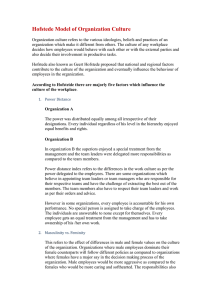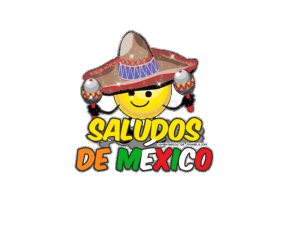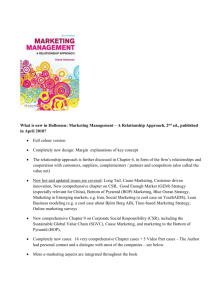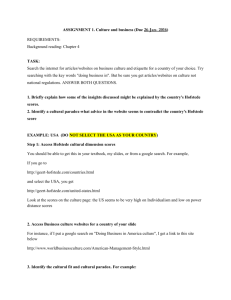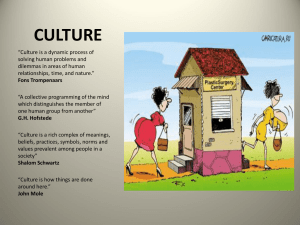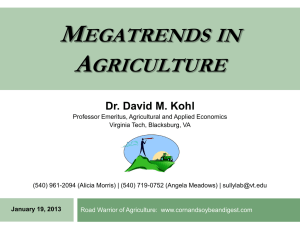International Marketing Environment
advertisement
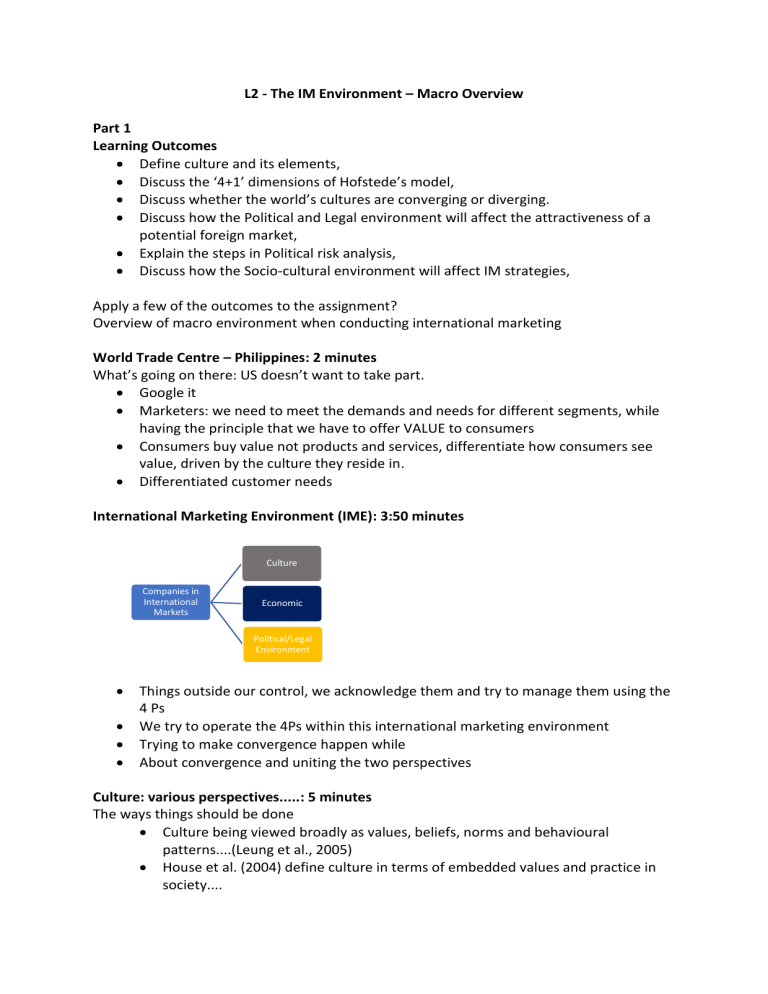
L2 - The IM Environment – Macro Overview Part 1 Learning Outcomes Define culture and its elements, Discuss the ‘4+1’ dimensions of Hofstede’s model, Discuss whether the world’s cultures are converging or diverging. Discuss how the Political and Legal environment will affect the attractiveness of a potential foreign market, Explain the steps in Political risk analysis, Discuss how the Socio-cultural environment will affect IM strategies, Apply a few of the outcomes to the assignment? Overview of macro environment when conducting international marketing World Trade Centre – Philippines: 2 minutes What’s going on there: US doesn’t want to take part. Google it Marketers: we need to meet the demands and needs for different segments, while having the principle that we have to offer VALUE to consumers Consumers buy value not products and services, differentiate how consumers see value, driven by the culture they reside in. Differentiated customer needs International Marketing Environment (IME): 3:50 minutes Culture Companies in International Markets Economic Political/Legal Environment Things outside our control, we acknowledge them and try to manage them using the 4 Ps We try to operate the 4Ps within this international marketing environment Trying to make convergence happen while About convergence and uniting the two perspectives Culture: various perspectives.....: 5 minutes The ways things should be done Culture being viewed broadly as values, beliefs, norms and behavioural patterns....(Leung et al., 2005) House et al. (2004) define culture in terms of embedded values and practice in society.... 1. Hofstede’s (2001) views culture as the software of the mind or collective programming of the mind... (in: Soares et al., 2007). 2. “that complex whole which includes knowledge, belief, art, morals, law, custom and any other capabilities and habits acquired by man as a member of society” (Nakata and Huang, 2002). a. Culture is a holistic system of relationships (organisation, institution etc) Combination of the two perspectives is what we’re focusing on ^ How consumer needs are actually communicated on a sub individual level in different nations Layers of Culture: 8 minutes (Leung et al. 2005; House et al. 2004; Hollensen, 2017) All feed into how we behave as individuals Nation culture: Expressions of shared beliefs, affects how we behave and make decisions o CULTURE IS NOT INNATE, it is learned o Through that learning process that our decision is influenced by the contextual environment o Culture evolves, NOT STATIC Experiences change everyday Business and industry: How that industry is being run/conducted in that nation. Varies across nations. Company culture: We react to different situations based on our experiences. The Visible & Invisible parts of culture (Hollensen, 2017): 11:30 minutes Visible: Tangible, you can see it If you get the left diagram right you’ll be successful MUST GET TANGIBLE FACTORS CORRECT HAVE TO ALSO GET INTANGIBLE FACTORS RIGHT o Norms o Values o Beliefs etc Bicultural identity: Develop on the continuing 13:52?? Re listen for definition o The more that increases within a nation, the more we have bi multiculturalism o This then influences legislation, how we operate within its framework o More policies are changed, takes account all of these things Culture, consists of.....15:20 minutes Language (verbal/non-verbal; spoken/written), o 4 distinct roles verbal language plays in international marketing: Re listen Translation? See as a indicator of how serious a business is about conducting business in a foreign marketing Communication? Values and beliefs (in tradition bound societies change is viewed with great suspicion, especially if it comes from a foreign entity!), o Our feelings in relation to risk o How we respond to things that are unknown to us Material elements (results from technology), Aesthetics (relates to what is meant by good taste in art, music, drama etc. Influences package designs), Education (transmitting skills, ideas & attitude as well as training & academia), Manners and customs, Religion, o How you dress: Different dress codes o Schedules: praying times etc o Food productivity: Halal o Ramadan: Fasting, energy levels affected o How to meet and greet Social institutions. o Family o o o o Religious Schools Media Government Affect how people relate/live in harmony with one another How you educate others to carry themselves within a specific society All these things affect how we conduct our operations Hall (1960)....Language (non-verbal/written): 23:35 minutes ....examined cultural orientation by means of high and low-context analysis. Low-context: rely on spoken/written language for meaning. High-context: use and interpret more of the elements surrounding the message to develop their understanding of the message; social importance and knowledge of the person and social setting add extra information. o 90% of meaning comes from nonverbal communication o Communication varies across different backgrounds, power distance? Comparative Characteristics of Culture (Hollensen, 2017) 25:50 minutes Slide missing? All of these things influence how we BUILD RELATIONSHIPS with people Looking at transfer of knowledge Contextual Continuum of Differing Cultures 28:30 minutes Slide missing Building long term relationship is important and takes times Low context: Info from the environment? Non-verbal Language (Hollensen, 2017) 31:40 More important in high context countries Space: How comfortable you feel being close to someone, if you move away when someone’s close to you would that be perceived as being rude Business agreements: A handshake? And then later on you sign the contract. No legal bind? o Research, find out their reputation/history All of these things influence decision making Sensuality and touch culture in Saudi Arabian versus European advertising: 35 minutes Missing slide Differences: o The role of the woman, the woman on left is portrayed as more of an accessory and the woman on the right is perceived as more dominant? Sensual? Hofstede’s Cultural Dimensions (Soares et al. 2007; Minkove & Hofstede, 2011). He viewed culture as the collective programming of the mind. Power Distance: o The degree of inequality between people in society, the norm, and how it’s accepted o High: power is within a few selected members, the subordinates accept it and do as they are told o Low: power is spread across members, the subordinates are expected to give an input when making decisions Uncertainty Avoidance o The degree to which nationals within a country like having struct rules/regulations o They want to avoid risk Power Distance o Look at long term planning to avoid risk? Individualism vs Collectivism o The degree to which country nationals are self-centred vs group orientation o Loyalty to an organisation, consumers Dimensions and EMPLOYEES o How consumers make decisions o Looking at how employees make decisions o Joint decision making or individual decision making High/Low Uncertainty Avoidance Individualism vs. Collectivism Masculinity vs. Feminity Long/Short Term Orientation Masculinity vs Feminity o The degree to which Masculine values override Feminine values o Masculinity o Feminity: Long/Short Term Orientation o Pragmatic way of looking at times in regards to rewards o Past vs Present o Goes with uncertainty avoidance, being risk adverse and meeting challenges. Part 2 Managing Cultural Differences ....Self-reference criterion (SRC).....characterises our own unconscious reference to our own cultural values. Eliminating SRC: 1. Define the problem/goal in terms of home country culture, traits etc. 2. Define the problem/goals in terms of foreign culture, traits etc. 3. Isolate the SRC influence in the problem and examine it carefully to see how it complicates the problem. A. Isolate our own views 4. Redefine the problem without the SRC influence and solve for the foreign market situation. Looking at culture in the context of the country that we’re entering Perspective of the nation we are going into Different way of doing things Pinpoint similarity and differences once we understand the culture then look at how to deal with differences Culture & Ethical Decision Making....3 minutes ....fundamental determinant of ethical decision making.... Ethics: the establish of moral standards of business behaviour, affects how we make decisions Classification of ethical requirement that a firm must adhere to has the following issues: 1. Organisational relations – competition, strategic alliance, local sourcing, A. How do we compete 2. Economic relations – financing, taxation, transfer prices, local investment, 3. Employee relations – compensation, safety, human rights, non-discrimination, training, sexual harassment, A. What type of salary should be provide B. Working hours C. Salary 4. Customer relations – pricing, quality, advertising, 5. Industrial relations – technology transfer, R&D, infrastructure development, organisational stability, A. What and how can we manufacture B. Rules and regulations we need to adhere to? C. Products/service guidelines 6. Political relations – legal compliance, bribery, environmental protection, political involvement. A. Bribery: the ethical standards in India, acceptable to accept bribes, not ethical anywhere else but in India is different B. Very easy to make judgment about ethics but when they start impacting how it gets your product to consumers your values as a organisation may differ overtime? Questions? 6:25 minutes Slide missing …. Is important in high-context than low-context cultures and includes space, time, material positions, friendship patterns and business agreements o Non-verbal communication What refers to attitudes towards beauty and good taste in music, the arts, and drama? o Tangible o How significant is aesthetics in terms of that country we are entering the product One more question missed? The Economic Environment… 8:20 minutes A nation’s economic environment indicates its present and potential capacity for consuming goods and services. o Is our potential capacity decreasing or increasing? A standard of living refers to the average quality of goods and services that are owned and consumed in a country. o What type of products and services are consumed/purchased in that country o Niche products? o Does that market connect with personal/individual products The Gross Domestic Product (GDP) is the total value of goods and services produced in a country in a year. o An indication of standard of living o Take the income of all your population/by population o Take productivity from product and services/population o Information of GDP in each country is available GDP is the most frequently used measure of a nation’s wealth because it is regularly published and easy to calculate and compare with other nations. Euro Monitor International…top 10 largest economies in 2020 12:40 minutes Emerging nations BRICS: Brazil, Russia, India, China, South Africa Largest economies as a % of world total GDP: 2020 (Euromonitor International) 19:50 minutes Rising population and household incomes: rising GDP/economy Younger consumers will become more important: more people are exposed to buying high cost goods Foreign investments will continue flowing in emerging countries: foreign companies will still face a lot of barriers when entering foreign markets Ease of Doing Business? (World Bank Group) 22:50 minutes NEED TO CONSIDER THIS FOR THE ASSIGNMENT Look and the list below and see what BRICS have done Dealing with construction permits, Getting electricity, Registering property, Getting credit, Protecting minority investors, Paying taxes, Trading across boarders, Enforcing contracts, Resolving insolvency. BRICS rely a lot on the younger generations for innovation Russia’s rise was due to oil and gas reserves China progressed so rapidly because they invested 9% of their GDP in infrastructure, hence it’s rapid growth. Political/Legal Environment 25 minutes ...are an important part of the firm’s macro-environment (firm’s uncontrolled environment)… …a multitude of stakeholders inside, but at times also outside a country’s boarders influences: Who governs the country? o Do we have a relationship with the bank? o Do we have special laws? What policies the government follows? And what legal regulations result from those policies? (Muhlbacher et al., 2006). In international marketing politic/legal factors are artificial because laws that are passed are usually the result of political decisions. Ranking (%): Investment Constrains/Changes, developing economies (MIGA-EIU Political Risk Survey 2013) 27 minutes, re listen for more info if needed MIGA: multi-lateral investment guarantee agency, part of the world bank EIU: Economist intelligence unit, research and analyst at the newspaper? Re listen Chart 1: which of the following factors in the next 3 years will pose the greatest constraint on investment by your company in developing countries? Chart 2: How do you expect? 28:40 minutes Chart 3: in which country is your firm currently investing in? China, India, Brazil, the BRICS Part 3: Seminar 3 Types of Trade Barriers; Tariffs (trade barrier/laws) …..favour local firms and discriminate against global ones. 1. Protect domestic producers – how? (see: Enderwich, 2011: Understanding the raise of Global Protectionism). It protects domestic producers because they don’t import anything so they don’t CHARGE customers as much money, whereas international producers are charged tariffs. Specific = charged imposed by weight or volume, Ad Valorem = charge is a % of the value of the goods, Discriminatory = charge against goods coming from a specific country? Quotas …a limit on the amount (in units/weight) of goods imported/exported during a certain period of time. 1. Import Quotas = restricts competitive forces and helps domestic producers maintain their market share and prices…but who wins? A. Domestic producer = if they are sourcing everything from the UK, they will benefit because their supply won’t change. B. Domestic/International producer = if they are importing materials to produce goods they will be a disadvantage because their supply is limited. C. Consumers won’t benefit from this scenario because the prices wouldn’t be as competitive and the supplies/goods are limited. Prices will probably rise. BREXIT. Prices being hiked up, not being able to import to a lot of goods. 2. Export Quotas = imposed to maintain adequate supply of products in home market common among countries exporting natural resources that are essential business or survival of the nation. A. Restricting exports and limited Embargo ….complete ban on trade (imports/exports) on particular products (one or more) Applied to accomplish political goals, Can be decreed by individual nations or by supranational organisations e.g. United Nations, Difficult to enforce therefore used less today than in the past. Local-content Laws/Requirements ….stipulates a specified amount of goods/services be supplied by producers in the domestic market… ….forces companies from other nations to employ local resources in their production processes – particularly labour…. ….protecting domestic producers from the price advantage of companies based in other low-waged countries…. …companies circumvent this requirement by locating production inside the nation stipulating the requirement. References Enderwick, P. (2011). Understanding the rise of global protectionism. Thunderbird International Business Review, 53, 325-336. Euro Monitor International: http://blog.euromonitor.com/2010/07/special-reporttop-10-largest-economies-in-2020.html#sthash.UGbtCvHS.dpuf Gateora, P., and Graham, J.,(2007), International Marketing, 13the Ed. New York: McGraw – Hill, International Edition. House, R., Hanges, P., Javidan, M., Dorfman, P., & Gupta, V. (Eds.). (2004). Culture, leadership, and organizations: The GLOBE study of 62 societies. Sage publications. Hollensen, S., (2017), Global Marketing, 7th Ed. Pearson Publications. Leung, K., Bhagat, R., Buchan, N., Erez, M., & Gibson, C. (2005). Culture and international business: recent advances and their implications for future research. Journal of International Business Studies, 36, 357-378. Lindridge, A., & Dibb, S. (2003). Is ‘culture’a justifiable variable for market segmentation? A cross‐cultural example. Journal of Consumer Behaviour, 2, 269-286. Muhlbacher., Helmuth, L., and Dahringer, L. (2006), International Marketing – a global perspective., 3rd Ed. London: Thomson Learning. Minkov, M., and Hofstede, G. (2011), The evolution of Hofstede’s doctrine, Cross Cultural Management: an international journal, 18, 10-20. Soares, A., Farhangmehr, M., & Shoham, A. (2007). Hofstede's dimensions of culture in international marketing studies. Journal of business research,60, 277-284. Solberg, C. (2002), Culture and Industrial Buyer Behaviour: the Arab experience, Paper presented at the 18th IMP conference, 1-34. The BRICS: Life after the boom (2013): https://www.youtube.com/watch?v=W6TO7OS_si4 World Bank Group (Doing Business): http://www.doingbusiness.org/rankings WIPR World Investment and Political Risk 2013: http://www.miga.org/documents/WIPR13.pdf Further Reading: 10 Things the WTO can do: http://www.wto.org/english/res_e/publications_e/wtocan_e.pdf Goldman Sachs: www.goldmansachs.com – information/predictions on trade and investment. Case Study: are there any cultural difference?
